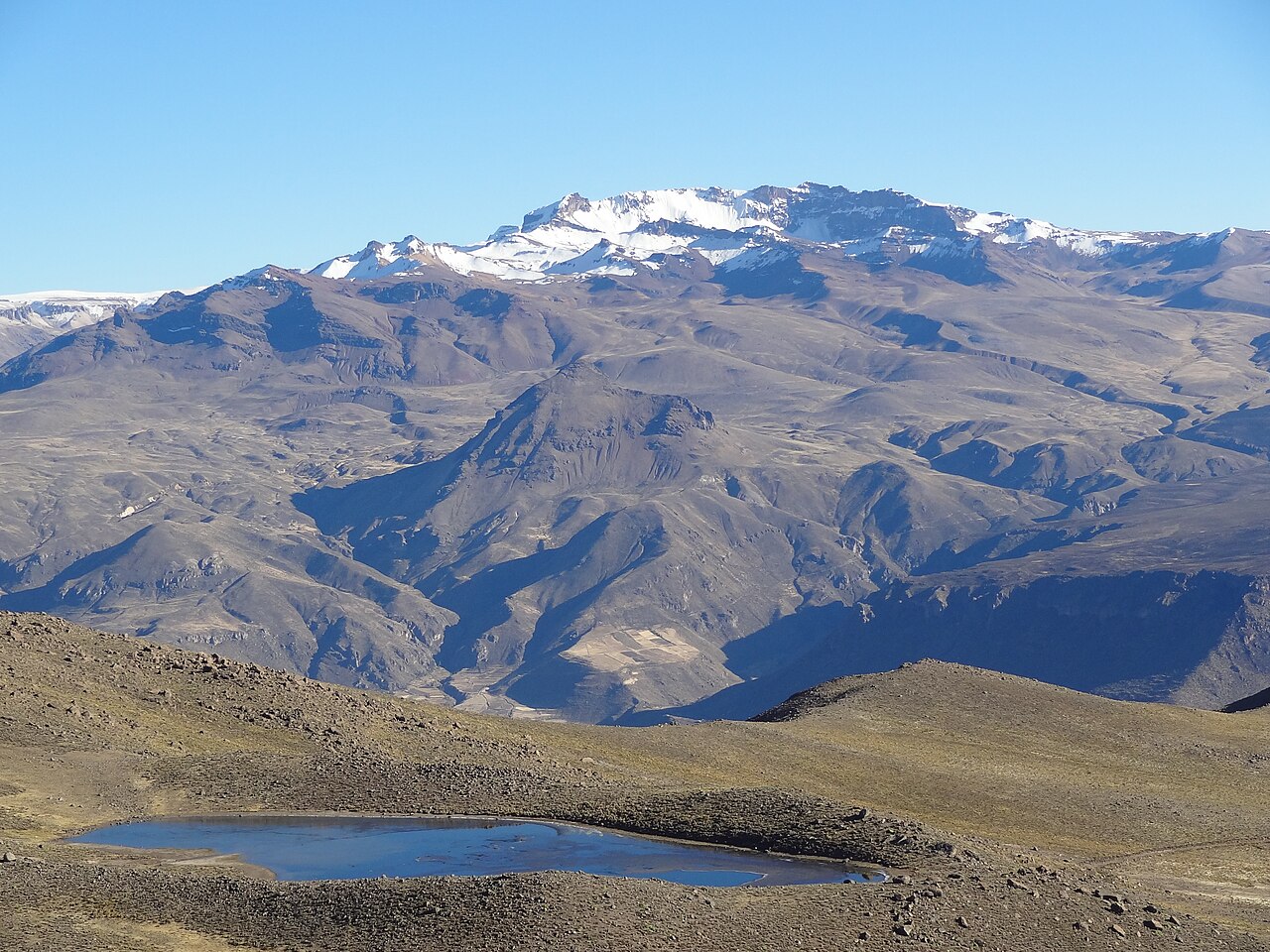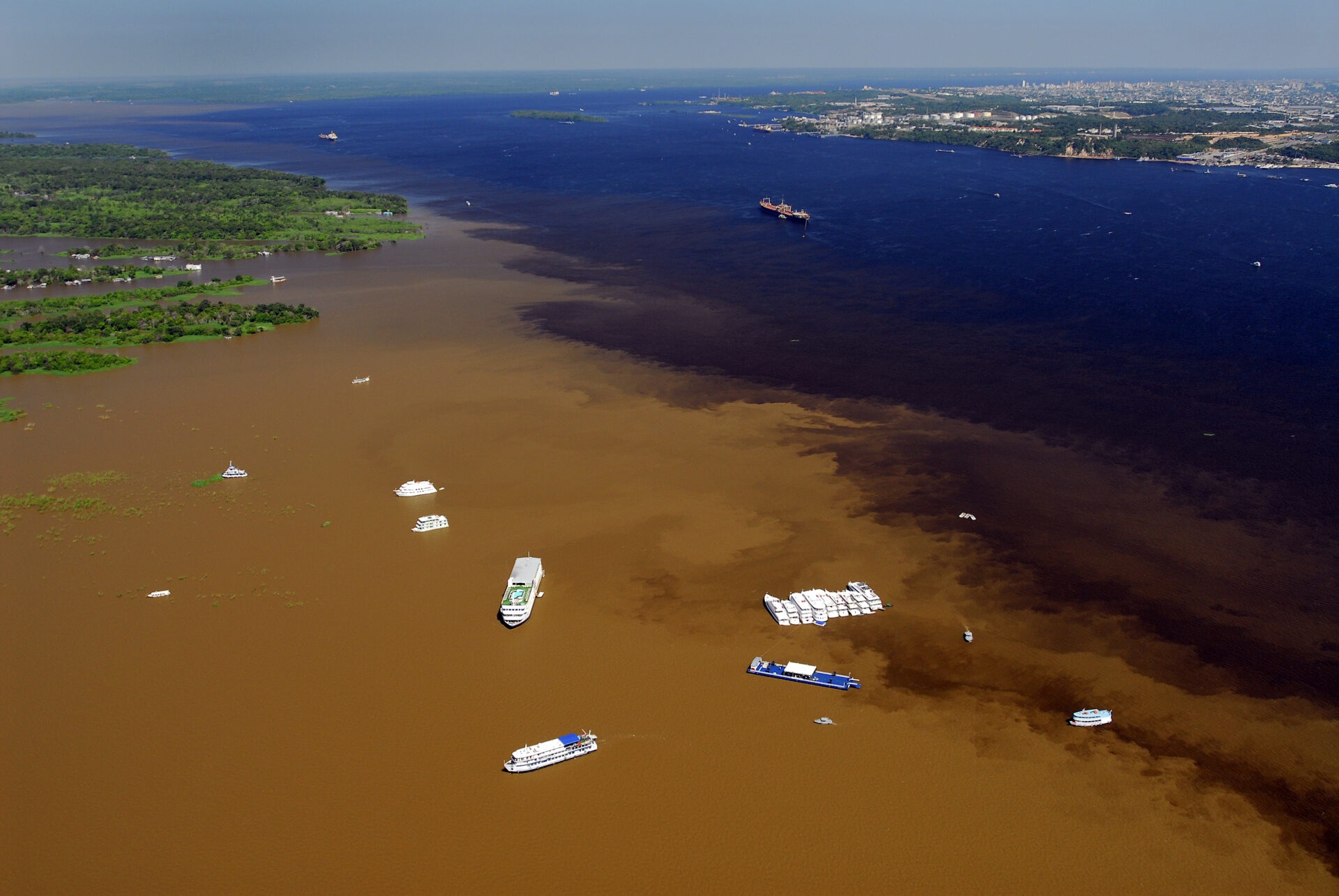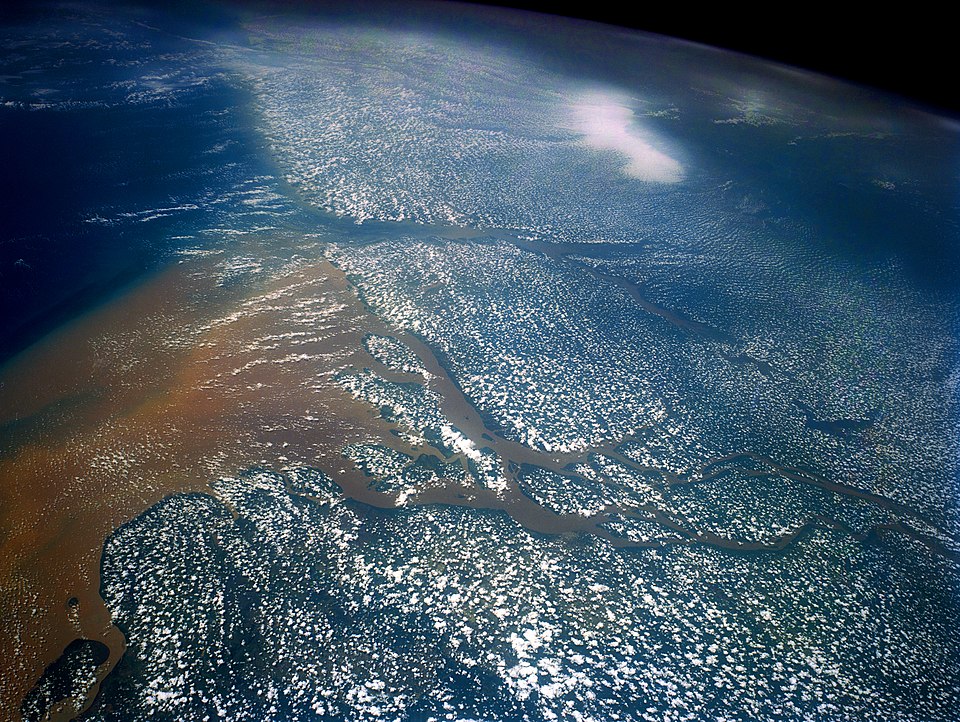By María Eugenia Corvalán*
A precious embryo with awakened eyes stirs vigorously inside a voluminous abdomen. She is about to give birth… oh! She is very old, with white hair. She does not complain, barely moves… we cannot see her contractions. Now she is dripping… oh, her waters just broke, releasing a faint trickle of fluid…
A baby is being born at more than 5,000 meters high on the summit of Mount Mismi, near Arequipa, Peru. It is a newborn river with a unique quality: it is born every day at dawn. It receives its little water from those ever-dwindling glaciers of the Andean Cordillera, somewhat bald, like a grandmother who has endured the harshness of time and weather.
When the mountain range sees its face, it whispers, “It is a dazzling baby… look closely. It has trillions of tiny, intelligent eyes in every drop of water. With them, it will be able to see the long journey ahead, and not only that—having so very, very many eyes, it will become the most extraordinary water-being on Earth, an aquatic giant nearly 7,000 kilometers long. Can you believe it?”.
Silence, please … Listen to that first thread of newborn waters falling down the slope. The ancients called it Carhuasanta, weaving together Quechua and Spanish: qarwa for being ‘golden’ like the sun, and santa, for a bundle of pure, holy waters.

Nevado Mismi, where the Amazon River originates, known to the ancients as Carhuasanta. © Daniel Stein / CC BY-SA 3.0 – Wikimedia Commons Photo licensed under Creative Commons Attribution-ShareAlike 3.0).
Since its birth high up in the mountains, the locals—Aymara and Quechua—began giving names to the river-baby, changing them as it grew. As it descended the mountain, the little one found shelter in the Apacheta ravine, or ‘mound of stones,’ a key landmark of rocks that the Incas had built there to follow its path…
When it moved eastward, the inhabitants called it the Apurímac River, or ‘the lord who speaks,’ because, according to the Incas, its lilted voice echoes through the valleys. It began to speak and to sing with the chorus of fish that never leave its side.
The Apurímac kept running, and being so friendly, numerous mountain tributaries began gifting it with new and delightful waters. It is a powerful network of waters where everyone gives. To give is the language of the waters—give, a word even shorter than mother.
Now transformed into the famous Ucayali, named for the ‘whiteness of its waters,’ it walks northward until it reaches a vast plain. From afar, it sees its cousin, who has also descended from another Andean Mountain. It is the Marañón River, waiting for it. They merge in a deep embrace, giving birth to the great Amazon River, in the city of Nauta, near Iquitos in Peru.
It is still a mischievous teenage river. Its great adventure begins like a backpacker setting out to explore new countries. Thus, it ventured into Bolivia, where it would make two new friends—the Beni and Mamoré rivers—who, in their playful way, splash it with streams of water until it is drenched and dripping, yet it carries on merrily along its path…
And here, something special happens: these two Bolivian rivers become one, on the border between Bolivia and Brazil, giving birth to the famous Madeira River, which generously gifts new waters to the Amazon. Proud and self-assured, it then begins to flow through Brazil like a fish in water.
Its vitality grows, it snorts with vigor. Meanwhile, a character from Ecuador seeks it eagerly. It is the Napo River, bringing thousands of pitchers of water from the Ecuadorian slopes of the Andes.
All give, it is the secret dialect spoken by the waters of more than 1,000 tributary rivers, carrying their beautiful offering to the Amazon.
The Guainía River could not be left out. Born in Colombia, it takes a stroll through Venezuela, where it meets the Casiquiari River. They join and wrap their waters as if they were a gift package, with the famous Negro River inside. From the northwest, it becomes one of the longest rivers in the world, flowing near the city of Manaus in Brazil.
At that geographic point, another river advances from the west with giant strides. Its waters, native to Peru, reach Brazilian territory. In that stretch, the Indigenous Peoples and the early Portuguese called it Solimões—but it is the very same Amazon River, arriving here with its clear, clay-colored waters.
Suddenly, as if they were two Olympic swimmers in a competition, each river begins to swim along its own lane, nearly 6 kilometers wide! They move forward side by side like athletes… yet their waters do not mix! They gaze at each other in wonder, without touching.
The Negro, ladies and gentlemen, carries warmer water at 28°C and lighter in weight, yet it moves more slowly at 2 km per hour, while the Solimões swims faster at 5 km per hour, bearing denser, colder waters at 22°C.
Until, at a given moment, face to face, the Negro and the Solimões decide to unite. They have created a natural work of art, in full color, with the green forest as their backdrop. A unique riverine jewel, known as the Meeting of the Waters.
There is applause of admiration from the boats, where tourists capture those sublime seconds in photographs. From that instant on, to this new alliance, to this monumental new river, the whole world will confirm its final name: the Amazon River!

Confluence of the Negro and Solimões rivers, which together form the Amazon River. Photo: Sergio Amaral/ACTO.
Its unstoppable waters nourish the largest rainforest in the world. A vast green… green network of life spanning 7 million square kilometers. The river’s greatest lesson is to give, to give of itself, and to give to us, for it has learned to receive with gratitude, treasuring every offering as an unrepeatable gift.
That is why the forest also learned to give: 600 billion Amazonian trees share thousands upon thousands of liters of water vapor each day with the atmosphere.
Thus are born the clouds that not only care for us with their life-giving rain, but also carry the Amazon’s flying rivers, born from the warm vapors released by the leaves of the forest and from the river itself, warmed by the scorching morning sun.
This beautiful group of siblings shelters within masses of air, transforming into lush rivers in the sky. Seeing this, the Atlantic winds begin to drive them forward, like someone pushing a baby carriage where they all ride together, carrying them on a journey to three very different destinations. One flows straight toward the south of the continent, reaching Patagonia. Thus, these currents of moisture—though invisible to the eye—refresh and fertilize the land.
Meanwhile, from the sky, the second flock of flying rivers continues its journey across all the countries that share the basin, accompanying the great river as it meanders through the land, so they may follow together the same path toward the Atlantic.
At the same time, when the swarm of winged rivers heads toward Peru, its mass of moisture reaches the high mountains of the Andes. Part of it crashes against the peaks while the rest rises swiftly. Up there, that mass condenses and transforms into new clouds or fresh snow upon the slopes. In this way, the Amazonian waters have taken a tour, a full circle, returning all the way to their origin.
It is the greatness of the water cycle, in which every drop shares the same mission: to give.
In this way, the rivers of the sky, and the Amazon flowing across the land, keep watering it without cease until they reach its depths, giving life to a new being: the Underground Amazon River, a heart that pumps oxygen and nutrients through the entrails of Brazil, Bolivia, Colombia, Ecuador, and Peru, in a journey spanning more than 4 million square kilometers—one of the most unknown freshwater reserves on the planet.
This has been the powerfully real story of the most generous river in the world.
* Text by María Eugenia Corvalán, writer and journalist, for ACTO.

The mouth of the Amazon River in the Atlantic Ocean. Photo by NASA, Wikimedia Commons.

